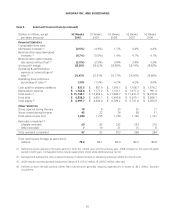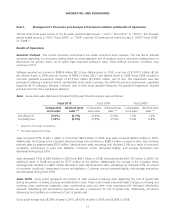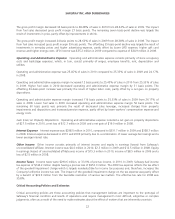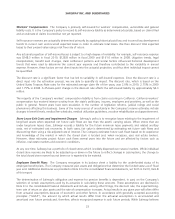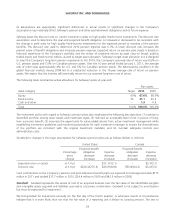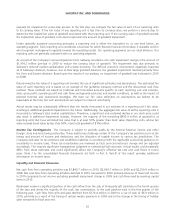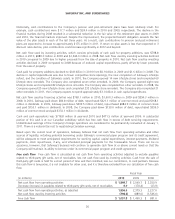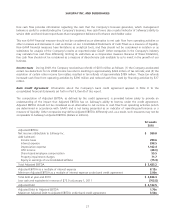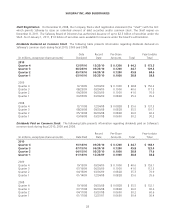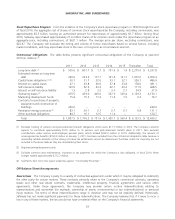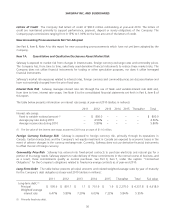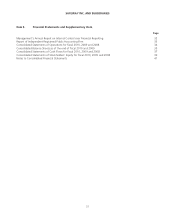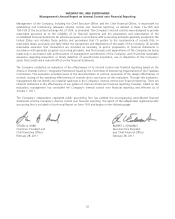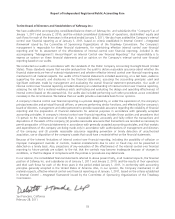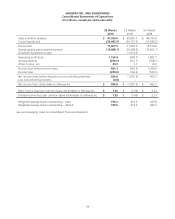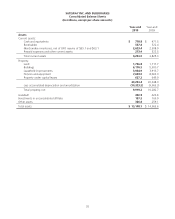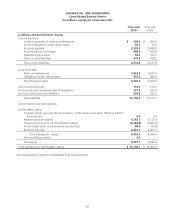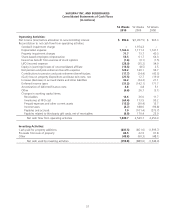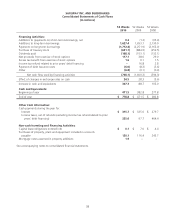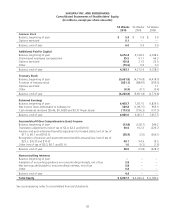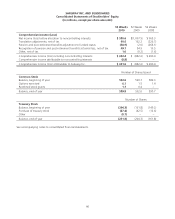Safeway 2010 Annual Report Download - page 46
Download and view the complete annual report
Please find page 46 of the 2010 Safeway annual report below. You can navigate through the pages in the report by either clicking on the pages listed below, or by using the keyword search tool below to find specific information within the annual report.
SAFEWAY INC. AND SUBSIDIARIES
Letters of Credit The Company had letters of credit of $90.0 million outstanding at year-end 2010. The letters of
credit are maintained primarily to support performance, payment, deposit or surety obligations of the Company. The
Company pays commissions ranging from 0.15% to 1.00% on the face amount of the letters of credit.
New Accounting Pronouncements Not Yet Adopted
See Part II, Item 8, Note A to this report for new accounting pronouncements which have not yet been adopted by the
Company.
Item 7A. Quantitative and Qualitative Disclosures About Market Risk
Safeway is exposed to market risk from changes in interest rates, foreign currency exchange rates and commodity prices.
The Company has, from time to time, selectively used derivative financial instruments to reduce these market risks. The
Company does not utilize financial instruments for trading or other speculative purposes, nor does it utilize leveraged
financial instruments.
Safeway’s market risk exposures related to interest rates, foreign currency and commodity prices are discussed below and
have not materially changed from the prior fiscal year.
Interest Rate Risk Safeway manages interest rate risk through the use of fixed- and variable-interest rate debt and,
from time to time, interest rate swaps. See Note E to the consolidated financial statements set forth in Part II, Item 8 of
this report.
The table below presents information on interest rate swaps at year-end 2010 (dollars in millions):
2011 2012 2013 2014 2015 Thereafter Total
Interest rate swaps
Fixed to variable notional amount (1) – $ 800.0 – – – – $ 800.0
Average pay rate during 2010 – 4.56% – – – – 4.56%
Average receive rate during 2010 – 5.80% – – – – 5.80%
(1) The fair value of the interest rate swaps at year-end 2010 was an asset of $11.6 million.
Foreign Currency Exchange Risk Safeway is exposed to foreign currency risk, primarily through its operations in
Canada. Certain transactions and the Company’s net equity investment in Canada are exposed to economic losses in the
event of adverse changes in the currency exchange rate. Currently, Safeway does not use derivative financial instruments
to offset the risk of foreign currency.
Commodity Price Risk Safeway has entered into fixed-priced contracts to purchase electricity and natural gas for a
portion of its energy needs. Safeway expects to take delivery of these commitments in the normal course of business, and
as a result, these commitments qualify as normal purchases. See Part II, Item 7, under the caption “Contractual
Obligations” for the Company’s obligations related to fixed-price energy contracts as of year-end 2010.
Long-Term Debt The table below presents principal amounts and related weighted-average rates by year of maturity
for the Company’s debt obligations at year-end 2010 (dollars in millions):
2011 2012 2013 2014 2015 Thereafter Total Fair value
Long-term debt:(1)
Principal $ 505.6 $ 801.7 $ 1.7 $ 751.9 $ 1.9 $ 2,275.0 $ 4,337.8 $ 4,618.0
Weighted average
interest rate 6.47% 5.80% 7.20% 6.03% 7.22% 5.84% 5.95%
(1) Primarily fixed-rate debt.
30


